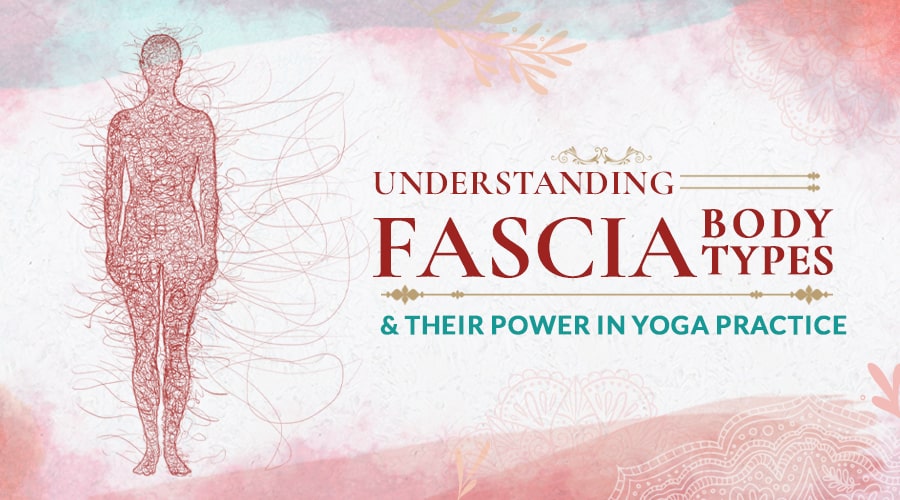Fascia is like a map that journeys deep within you, connecting the highways and byways that your muscles, bones, organs, and tiniest cells use to communicate. But this map is not a flat piece of paper with four corners. Rather, it’s a responsive, shape-shifting architecture affected by your every movement and even your emotions. Learning how to read this map as a yoga teacher or practitioner might be a challenge, but it’s one of the most powerful tools you can have.
Much like a navigator uses a map to find the best paths, fascia archetypes help us identify movements that cater to our unique body types, leading to a smoother and safer practice. By choosing yoga styles that align with your natural fascia architecture, you are also able to move in a way that helps you grow, connect, and heal. So,how do you find your fascia type?
In this simplified guide, we’ll journey deep within the fascia matrix, explaining the different fascia body types, how to identify yours, and why this knowledge is power for yoga teachers and practitioners. Intrigued?
What Are Fascia Archetypes?
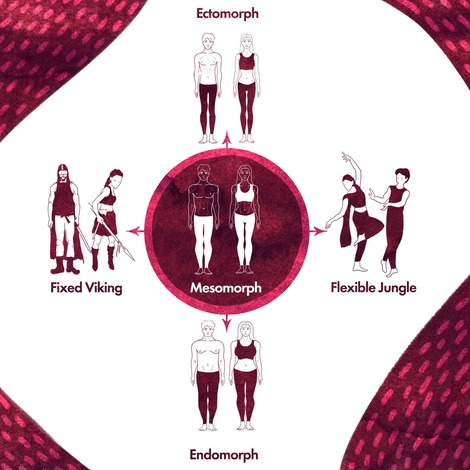
Fascia is the connective tissue that joins every part of the physical inner world together. We can think of it like a sensitive fabric that weaves throughout the entire body like a highway in the city, connecting everything from your muscles and bones to your blood vessels and nerves.
In yoga anatomy, we’re taught that fascia is more than an academic exercise—it's a practical tool that enhances how we move, teach, and even heal. One innovative approach we use to put this knowledge into practice is Posture Profiling. This technique categorizes different fascial "body architectural" types to help us identify where we fall on a spectrum of motion and adjust our yoga practice accordingly.
The two main fascia body types discussed in yoga are:
- Viking Style (Fixed): This type is characterized by a strong, sturdy build with less natural flexibility and more resilience.
- Indian Temple Dancer/Jungle Style (Flexi): Individuals with this fascia type are the opposite to Viking style, exhibiting a high degree of flexibility and fluid movement with less force.
These fascia types are not meant to pigeonhole or put practitioners into a box. Rather, they serve as a starting point—a way to recognize our unique bodily structures and find the most beneficial yoga practices for our personal development.
How Are They Different to Body Types in Physiology?
We cannot talk about fascia body types without mentioning somatotypes. Somatotypes are traditional body types based on a person's general shape and composition, reflecting certain patterns in metabolism, muscle development, and fat storage. They include:
- Ectomorphs: Typically characterized by a slim, lean build with a high metabolism and low body fat. Ectomorphs may struggle to gain muscle and weight.
- Mesomorphs: Known for their athletic, muscular build with a well-balanced metabolism, mesomorphs tend to gain muscle easily and maintain a moderate body fat level.
- Endomorphs: Usually have a rounder or more solid physique with a tendency to hold onto fat. Therefore, endomorphs may find it more challenging to lose weight but can build muscle easily.
In this guide, we will consider both fascia body types and somatotypes equally. This allows us to develop a personalized yoga practice that respects and enhances each person’s natural movement preferences and physiological patterns.
How to Find Your Fascia Body Type
If you want to enhance your practice as a student or yoga teacher, understanding how to identify fascia types is a crucial step.
1. Self-Assess
Reflect on your own body’s tendencies. Are you generally stiff and strong, needing to work on flexibility? Or are you very flexible but could benefit from more strength training to prevent injuries?
Consider how your body reacts during yoga or other forms of physical activity. Do you find it easy to hold rigid poses, or do you excel in flowy, flexible movements?
2. Plot Your Somatotype (Y Axis)
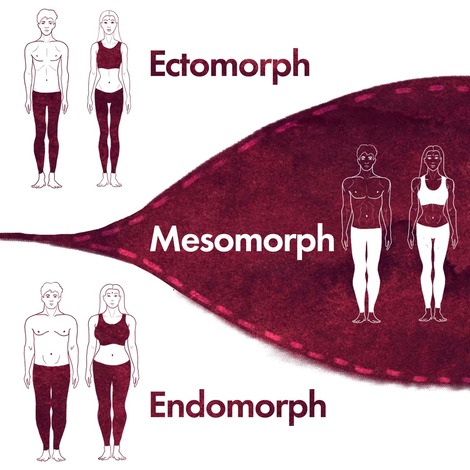
Below is a simple graph based on fascial and morphological body types which we can use to almost sketch a person in real life motion. Think of it like a tool to capture a moment of the physical, connected, living architecture and categorise it to improve our practice and how we provide adjustments in yoga.
First, plot your body shape type on the Y Axis, referring to the characteristics of the different Somatotypes below to guide you.
Ectomorph
- Characteristics: Sharp, alert to surroundings, often seen in animals like birds or squirrels.
- Behavioral Traits: Nervous, quick movements, bursts of high-speed energy, acute awareness and attention to detail.
- Focus: What is happening outside the body, while remaining sensitive to what occurs within.
Meso(morph)
- Characteristics: Meaning middle, meso(morph) represents a balance and can be seen as a mediator.
- Behavioral Traits: Prefers a balance of physical activity and thoughtful action.
- Focus: Mix of inward and outward attention, seeking balance.
Ectomorph
- Characteristics: Solid build, tends to store more fat.
- Behavioral Traits: Strong, can build strength easily, may struggle with weight loss.
- Focus: More inward-focused, tends to be less active than the other types.
3. Plot Your Fascia Type (X Axis)
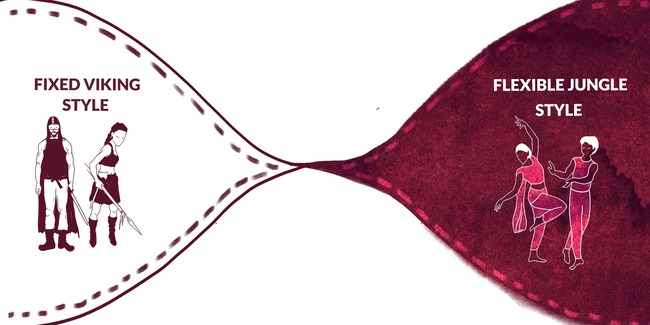
Based on your self-assessment, place a mark on the chart where you feel your fascia type falls. This is not a fixed label but a starting point to understand your body better. If you find yourself leaning towards the middle, you may exhibit characteristics of both types.
Viking Style (Fixed)
- Characteristics: Strong, resilient, built for endurance, especially in colder climates.
- Physical Traits: Broad shoulders, significant stamina, more mass and strength.
- Fascial Elasticity: Towards the stiffness end of the spectrum.
Indian Temple Dancer/Jungle Style (Flexi)
- Characteristics: Agile, less bulk, built for warm climates, moves smoothly like navigating through dense foliage.
- Physical Traits: Taught, sinewy limbs, less brute force.
- Fascial Elasticity: Very supple, on the flexible end of the spectrum.
4. Tailor Your Practice to Your Fascia Body Type
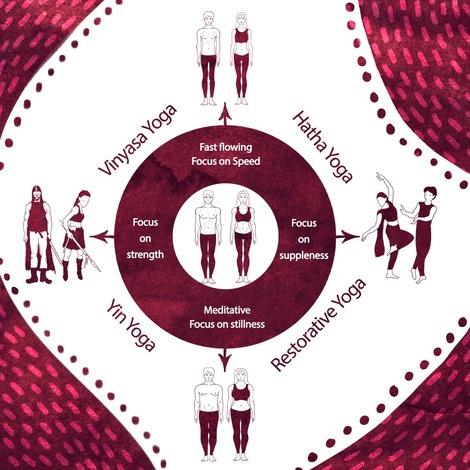
Apply this insight to choose the best yoga style for your fascia type. Each yoga style follows a different rhythm. Restorative Yoga for example is a lot slower and more passive than Ashtanga Yoga. Therefore, a naturally flexible Jungle body type is more likely to find balance with holding patterns, encouraging higher stiffness. This might include a more active or power-based yoga style.
That doesn’t mean to say that there is only one style of yoga for you. A lot of people can practice a variety of styles, and changing up your style is still strongly advised to promote fascia health. Remember, the goal is not to change a person’s fascia type, but to recognise their default type and invite for them a greater range, a more optimal balance and elastic integrity.
What’s Next?
With these insights, we start to piece together a more complete picture. Understanding someone's body type helps us recognize them better, while their fascia map guides our instruction. You'll start to notice the finer details—the subtle shifts and shades in their movements that are as distinct as handwriting.
As your understanding deepens, you'll also get better at predicting and managing imbalances. You'll know when to push a little further, helping someone stretch into new possibilities, and when to pull back, helping them find strength and stability within their own boundaries.
Ready to take a step further into fascia? My 50-hour Fascia Yoga Teacher Training Course will provide you with the practical skills and knowledge to apply the science of fascia and myofascial release in your yoga classes and personal practice. Discover how to identify fascia body types and learn to design optimum practices for all kinds of students.

Discover fascia’s amazing role in yoga
Get free access to an exclusive podcast with fascia anatomy expert Joanne Avison

